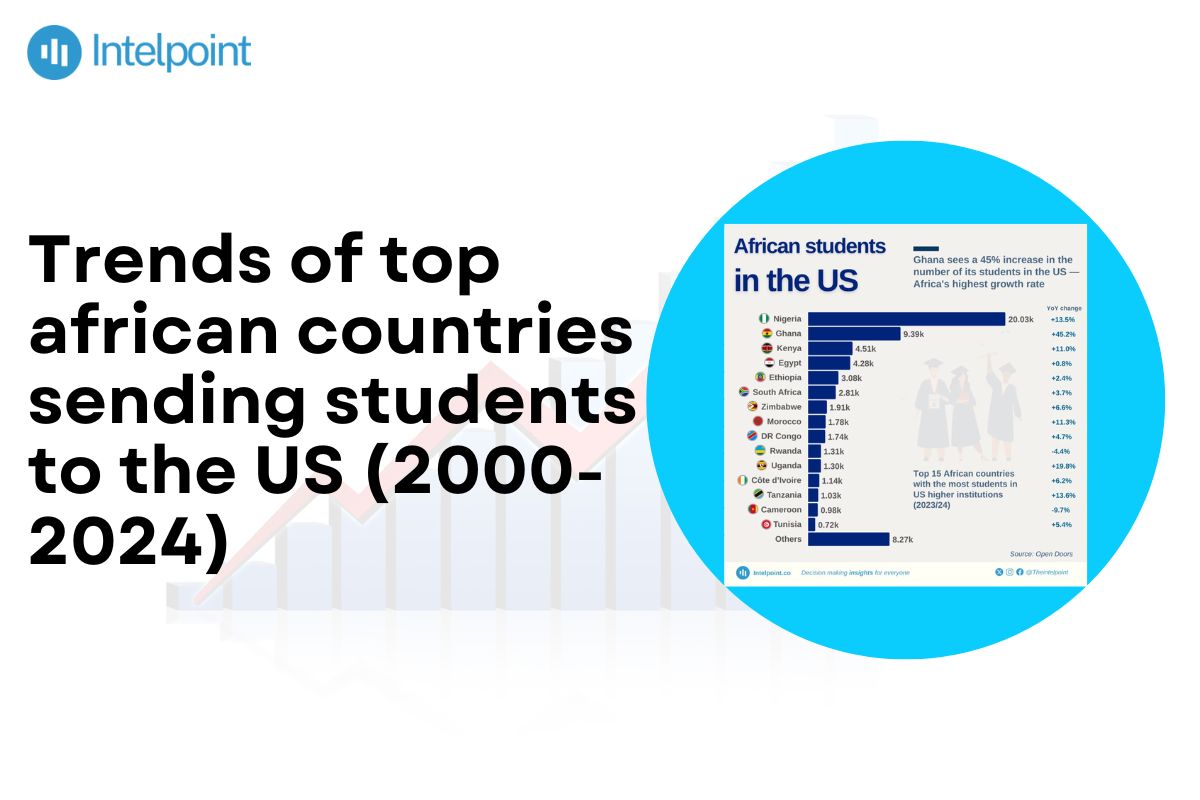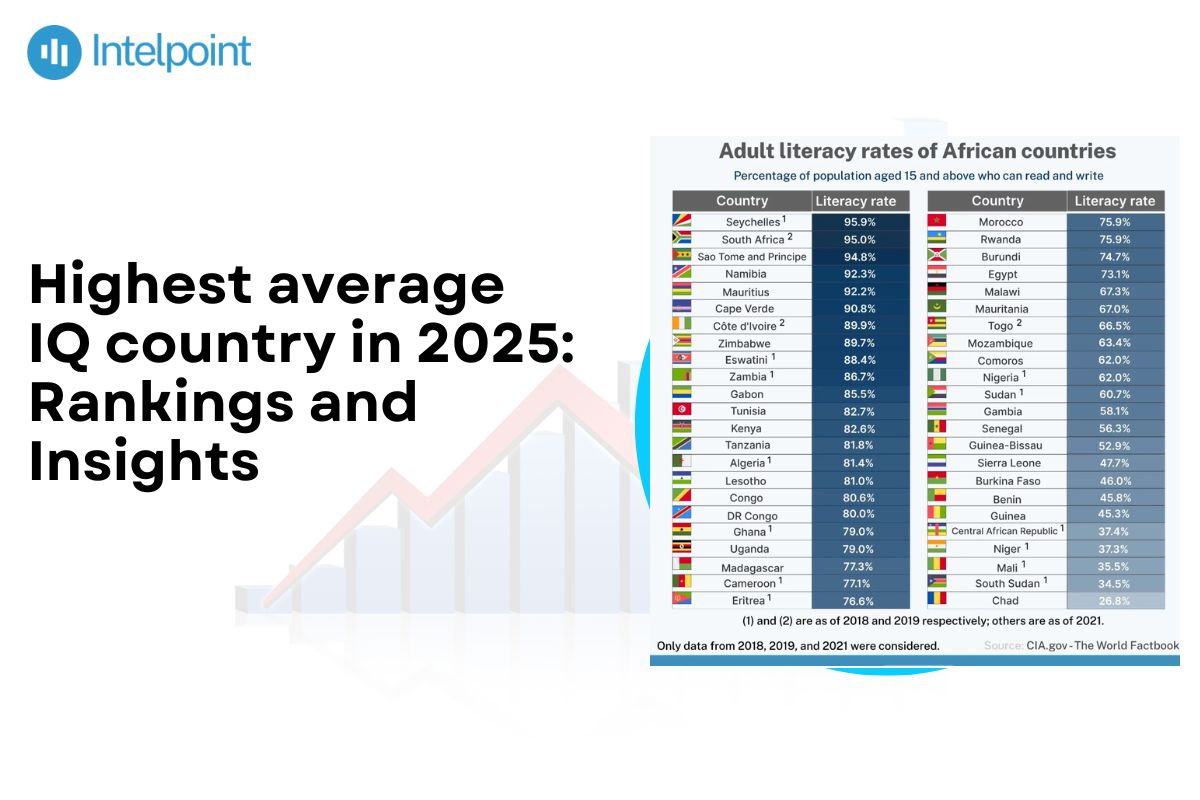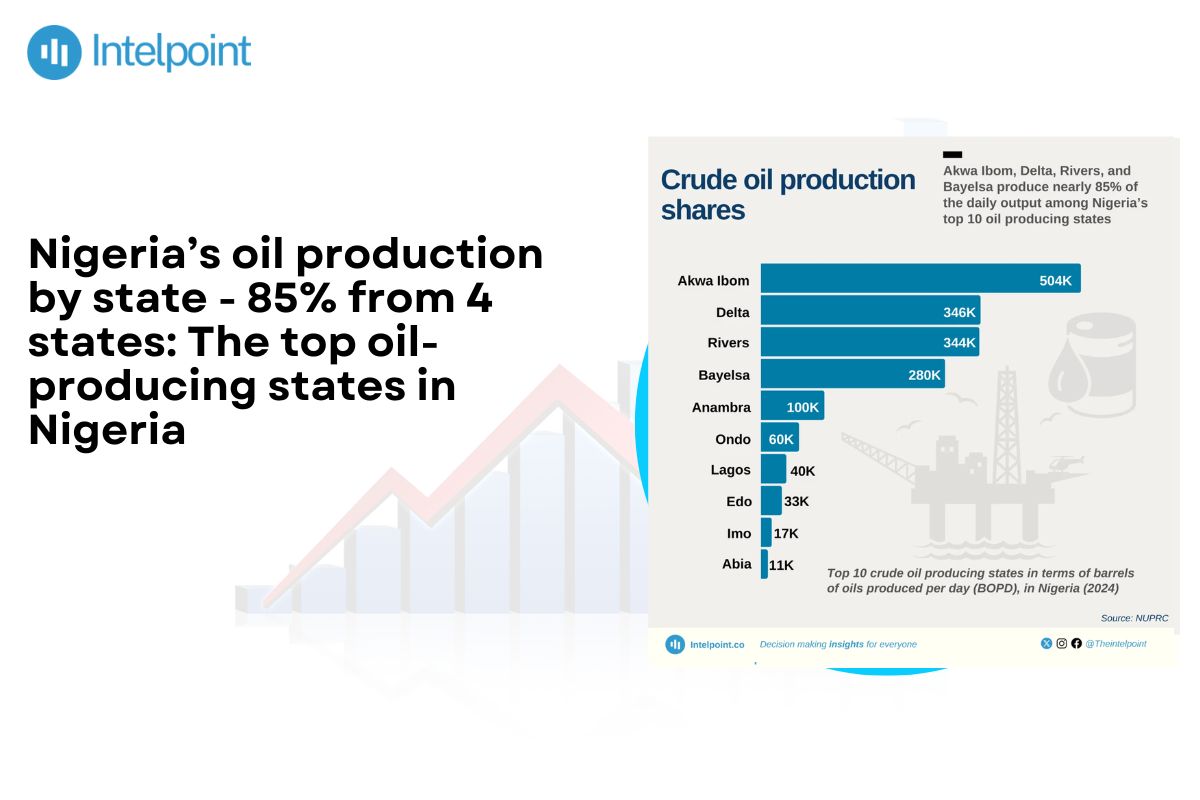African student enrollment in America's institutions of higher learning increased by approximately 20,000 students in 2000 to over 56,780 by 2023/2024. The most prominent countries of origin were Nigeria, Ghana, and Kenya. International students constitute approximately 6% of America's population of students of higher learning.
Here’s a detailed table summarizing the trends of the top African countries by number of citizens studying in the US from 2000-2024:
| Period | Top countries by number of students | Key trends |
| 2000-2010 | Nigeria, Kenya, and Ghana | Gradual increase by 80% to 36,000 African students in the US. |
| 2010-2015 | Nigeria, Kenya, and Ghana | Enrollment of African students grew by 25% to about 45,000. |
| 2015-2020 | Nigeria, Ethiopia, and South Africa | The number of African students surged to over 55,000. |
| 2021-2024 | Nigeria, Ghana, and Kenya | Enrollment remained strong, with around 56,000 students showing resilience despite global challenges. |
Key takeaways
- 2000-2010: African students within the U.S. had grown by 80%, and Nigeria, Kenya, and Ghana were the top sending countries.
- 2011-2015: Enrollment grew by 25%, driven by Nigeria and Ghana.
- 2016-2020: African students amounted to over 55,000, dominated by Nigeria.
- 2021-2024: Enrollment averaged around 56,000, led by Nigeria, Ghana, and Kenya.
Trends of the top african countries by number of citizens studying in the US from 2000-2024
2000-2010: Steady growth in African student enrollment
African students in the United States increased by 80%, from approximately 20,000 in 2000 to 36,000 in 2010. Nigeria was consistently the top country, with 7,000 students in 2000 and 13,000 by 2010. Ghana and Kenya also had notable increases, with Ghana moving from 2,000 to 4,000 and Kenya from 1,500 to 3,000.
2011-2015: Continued expansion amid global challenges
Between 2011 and 2015, the number of African students in the U.S. continued to increase, reaching about 45,000 by 2015. Nigeria continued to lead the list with 15,000 students, while Ghana and Kenya continued to grow with 5,000 and 4,000 students, respectively. Despite the global economic challenges, there was a 25% growth in African student enrollment in the United States.
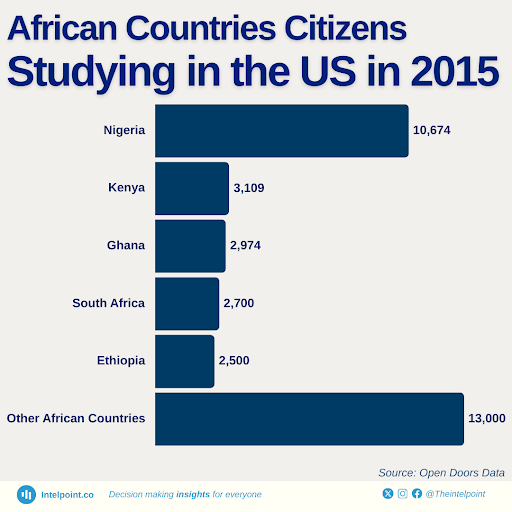
2016-2020: Accelerated growth and diversification
From 2016 to 2020, the number of African students enrolled in the U.S. surged to over 55,000, a 22% increase from the previous period. Nigerian enrollment reached 18,000, while Ghana and Kenya enrolled 6,000 and 5,000, respectively.
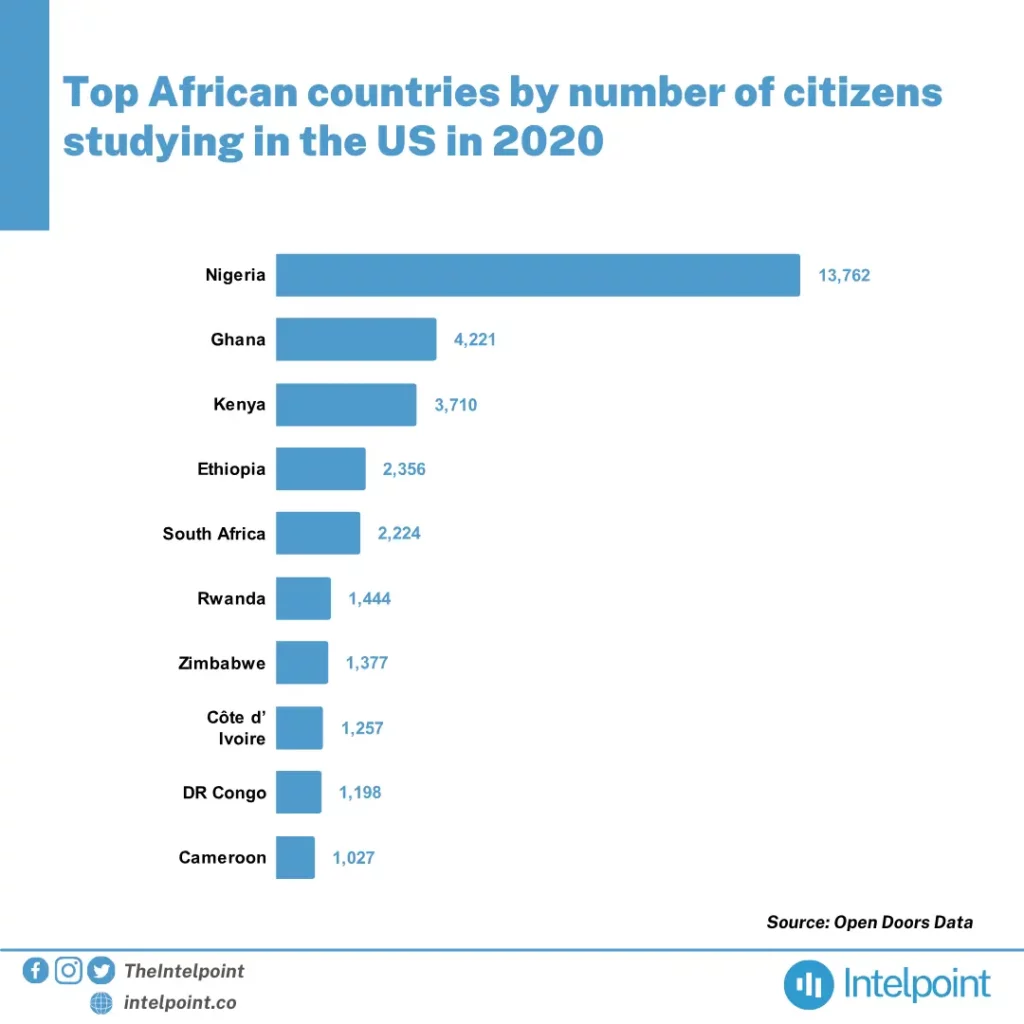
2021-2024: Resilience amidst global challenges
From 2021 to 2024, African student enrollment in the U.S. remained strong, with numbers leveling off around 56,000. Nigeria was the leading country with 20,000 students, followed by Ghana and Kenya, with about 9,000 and 4,000 students, respectively.


Conclusion
From 2000 to 2024, the enrollment of African students in U.S. higher education institutions continued to rise. In 2000, about 20,000 African students were enrolled, with Nigeria, Ghana, and Kenya having the highest enrollments. By 2010, enrollment had increased by about 80% to about 36,000. The succeeding decades further developed this growth, with more than 56,000 students enrolled by 2024.
FAQs
How many african students are there in the us?
There are over 56,780 students in the United States studying from African countries.
Which countries send the most students to the us?
Nigeria leads with 20,029 students in U.S. institutions, followed by Ghana with 9,394, Kenya with 4,507, Ethiopia with 3,078, and South Africa with 2,814 students.
Which country has the most african students?
Nigeria has the highest number of African students in the U.S., with 20,029 enrolled in the 2023/2024 academic year.
What percentage of students study abroad in the usa?
International students comprise about 6% of the U.S. higher education population.

